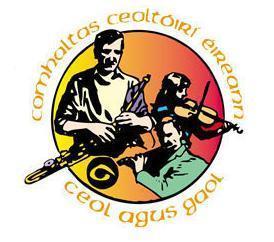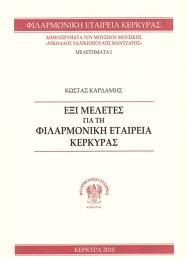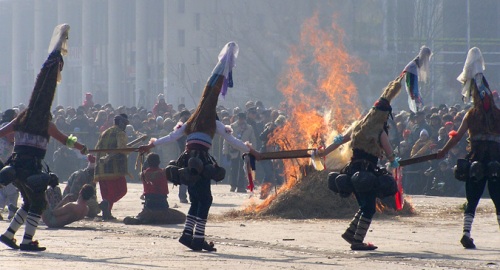Arapīdes, also known as Carnival, takes place on 5 and 6 January (Epiphany Eve and Epiphany Day) in Monastīraki, Greece. Rooted in ancient Dionysiac worship, the ritual involves performances by four groups: arapīdes, masked men in black capes holding wooden swords; gkiligkes, men wearing women’s local dress; pappoudes, men wearing men’s local dress; and tsoliades or euzōnoi, men dressed as guards.
Starting in the morning, the assembled troupe visits each house in the village and dances with the head of the household, who then presents a donation. In the afternoon the troupe performs in the village square; then all of the villagers join in the dancing, which lasts into the night.
This according to “Ritual acts and dance: The case of the Arapides in Monastiraki” by Ioannis Prantsidis (Studia choreologica VIII [2006], pp. 81–120). Below, the troupe dances in the village square in 2011.
Related articles:











 On the eve of the event, youths go from house to house collecting wood for the ceremonial bonfire. In the morning the participants choose their roles and don the corresponding masks and sheepskin capes. The stock characters may include a groom, a bride, a devil, a priest, a gypsy, and a dancer with a bear. To the accompaniment of drums and shawms, the dancers parade through the village with abundant comical antics. The ceremony culminates with a spirited dance around the collective bonfire.
On the eve of the event, youths go from house to house collecting wood for the ceremonial bonfire. In the morning the participants choose their roles and don the corresponding masks and sheepskin capes. The stock characters may include a groom, a bride, a devil, a priest, a gypsy, and a dancer with a bear. To the accompaniment of drums and shawms, the dancers parade through the village with abundant comical antics. The ceremony culminates with a spirited dance around the collective bonfire.


